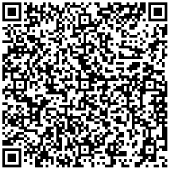On Monday (July 11), spot gold fell again, falling to $1,732.17 an ounce, the lowest since September 2021 set last week, and the U.S. dollar index hit a new high in nearly 20 years, putting pressure on the demand for U.S. dollar-denominated gold.
Affected by the healthy U.S. non-farm payrolls data in June and the bullish expectation of the Federal Reserve continuing to raise interest rates sharply, the U.S. index is approaching 107.808, the highest since late October 2002 recorded in the previous trading day, keeping overseas buyers away from the gold market.
U.S. non-farm payrolls consolidate Fed’s hawkish territory in June
The U.S. economy added 372,000 jobs in June and private-sector payrolls rose back above pre-pandemic levels, while the national unemployment rate remained at a record low 3.6%. The strong report could bolster the Fed’s resolve to raise rates by another 75 basis points this month, following in June.
Atlanta Fed President Bostic, who until recently was one of the Fed’s most dovish policymakers, said on Friday (July 8) that he is “completely” in favor of raising interest rates at the Fed’s policy meeting later this month. 75 basis points, “This (jobs) report just reiterates that the economy is strong and the labor market still has a lot of momentum, which is a good thing.”
The market expects that the annual rate of US CPI to be released this week will climb to 8.8%, and the overall price pressure in the US economy is expected to continue to soar. Booming expectations for U.S. inflation data for June will cement bets on another sharp rate hike by the Federal Reserve and further boost the dollar.
While average hourly earnings continued to fall at an annualized rate of 5.1% in June, to a four-month low of 5.1%, it was nowhere near enough to bring inflation back to the Fed’s 2% target. Compensation growth may need to slow to around 3.5% to keep pace with the Fed’s inflation target, according to Goldman’s estimates.
A strong labor market is often seen as one of the signs of a healthy economy and provides more ammunition for the central bank to raise interest rates again sharply, pushing lowergold price. Higher interest rates increase the opportunity cost of holding gold as a non-yielding asset.
dollar is too strong
Ricardo Evangelista, senior analyst at ActivTrades, said the U.S. non-farm payrolls report for June partially eased recession fears and wondered how far the Fed could go in terms of tightening policy.
MUFG’s LeeHardman noted,The stronger-than-expected U.S. jobs report for June and the latest public comments from Fed officials suggested the central bank will raise interest rates by another 75 basis points later this month. “The dollar has accelerated over the past week, and we expect the momentum to expand further in the near term.”
Hedge funds are confident the dollar can climb to higher levels, and it has paid off staggeringly. Hedge funds have been long the U.S. dollar against a basket of G10 currencies on a weekly basis for 51 consecutive weeks, with the average net long position valued at about $15 billion in the second quarter, according to data from the Commodity Futures Trading Commission.
The U.S. dollar index rose for four straight quarters in the second quarter, extending its gains to more than 6 percent, its biggest single-quarter gain since the fourth quarter of 2016, amid widespread belief that the Federal Reserve will raise interest rates more effectively than other central banks to fight inflation. The dollar has appreciated more than 12% so far this year.
Difficulties in other countries
But the Fed’s continued tightening of financial conditions is expected to hit other economies hard. In the face of such a strong dollar, other economies have little energy to resist inflationary pressures through “reverse currency wars” — raising their currencies against the dollar.
With Russia shutting down the Nord Stream 1 gas pipeline for 10 days of scheduled maintenance on Monday, ING strategists noted: “Many are concerned that Russia may take this opportunity to halt or slash gas exports to Europe, thereby reducing gas exports to the region. The economic outlook is a serious blow.”
Sonja Laud, chief investment officer at Legal & General Investment Management, said: “We expected an earlier recession in Europe, where the U.S. is an energy exporter and Europe is an importer, with very different positions in the current energy price environment.”
The risk of recession in Europe is relatively higher, and the euro is expected to fall below parity against the dollar, which also strengthens investors’ bullish sentiment on the dollar.The ECB has followed the Fed to tighten monetary policy, but has had to remain as dovish as possible in response to the economic shock of Russia’s invasion of Ukraine.
In stark contrast to Fed policy, the Bank of Japan has shown no signs of changing its ultra-easy monetary policy. Bank of Japan Governor Haruhiko Kuroda reiterated at a meeting of bank branch managers on Monday that the BOJ will not hesitate to take additional easing measures if necessary.The Bank of Japan’s policy is likely to continue to push the yen lower against the dollar.
Although some analysts believe that former Prime Minister Shinzo Abe was shot and the Bank of Japan Governor Haruhiko Kuroda’s term ends in April next year, this may be an opportunity for Prime Minister Kishida to rethink the side effects of monetary easing. But supply chain disruptions caused by the pandemic continue to weigh on Japan, and Russia’s war in Ukraine is intensifying,Japanese authorities are unlikely to reverse the yen’s weakness, and upward pressure on import prices will continue to build.


Massive information, accurate interpretation, all in Sina Finance APP
Responsible editor: Zhang Jingdi
